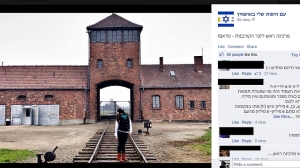Blog Archives
Imagining Heritage: Selfies and Visual Placemaking at Historic Sites
A variety of ideologues routinely reduce selfies to yet another confirmation of our mass superficiality. Instagram is indeed littered with scores of us primping for our bathroom mirrors and posing at arm’s length for “ego shots”: it seems infeasible to salvage especially profound insight into contemporary society from Justin Bieber’s self-involved posing or Kim Kardashian’s often-ridiculous stream of booty calls. Nevertheless, the countless online selfies register a self-consciousness about appearance that is likely common in every historical moment, and the recent flood of online selfies may simply confirm that we know we are being seen and we are cultivating our appearance for others. After looking in the mirror for millennia, digitization has provided a novel mechanism to re-imagine, manipulate, and project a broad range of personal reflections into broader social space.
Last week a New Yorker article fueled selfie critics who lamented the apparent narcissism of selfies at Auschwitz. The page was removed after a host of media decried self portraits at the concentration camp and rejected (or simply did not comprehend) the page’s clumsy attempt to use irony to assess the holocaust’s social meanings. The Israeli page collected youths’ concentration camp selfies, and the images push irreverence and irony beyond many peoples’ tolerance: the page included typical selfie poses of pouting expressions and stylized self-contemplation, but these selfies were at places like the iconic Auschwitz gates or had sarcastic added descriptions such as “Even here I’m drop dead gorgeous!” Read the rest of this entry



